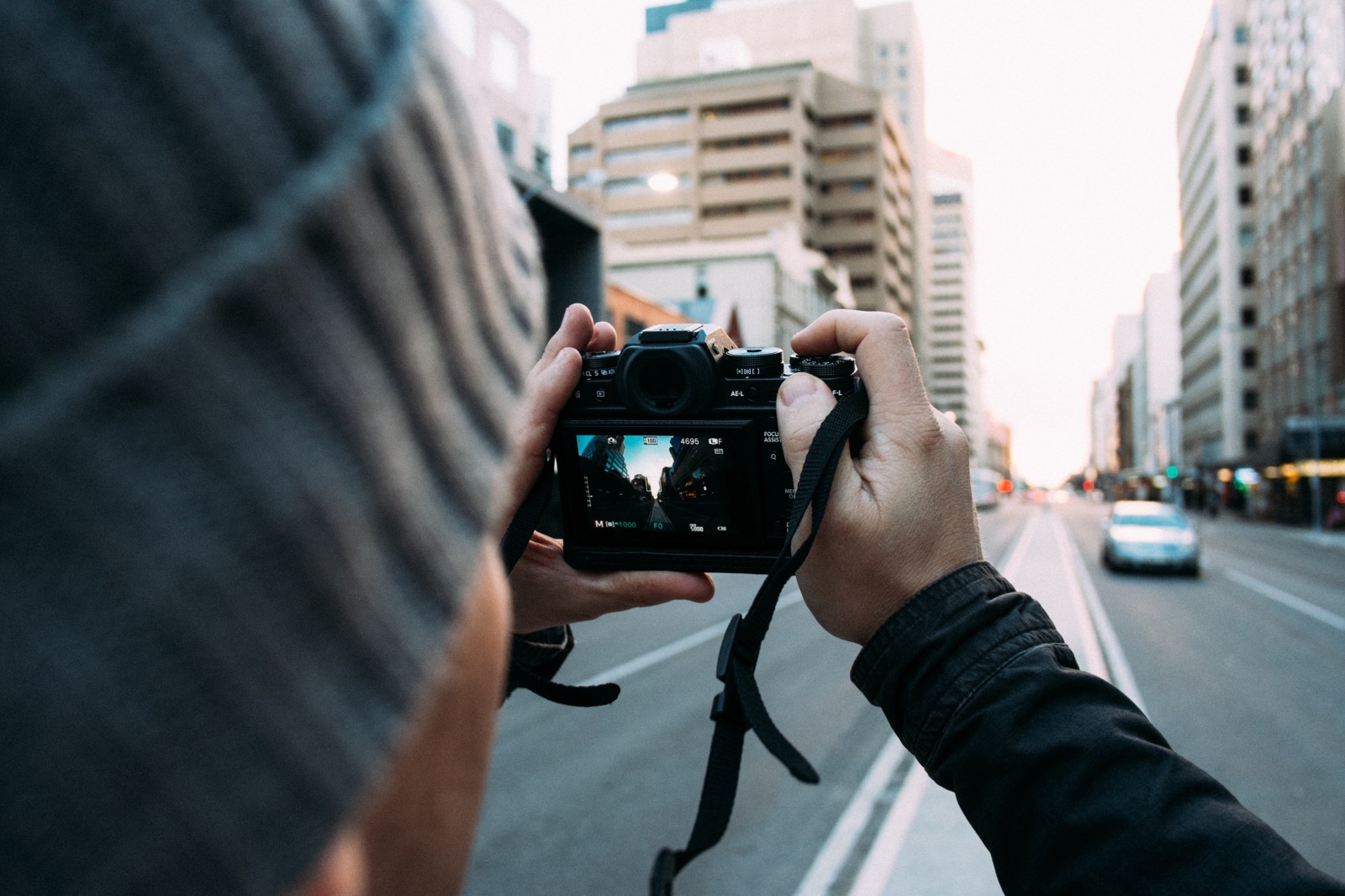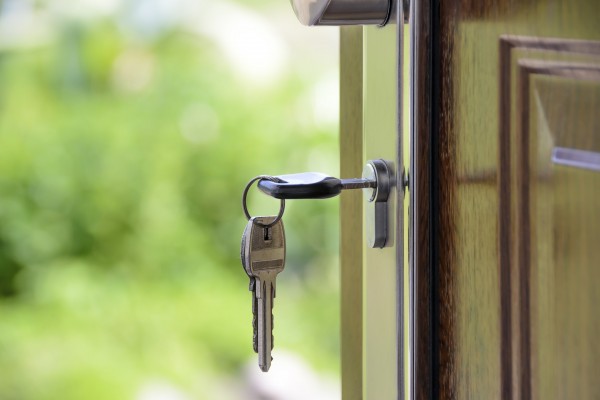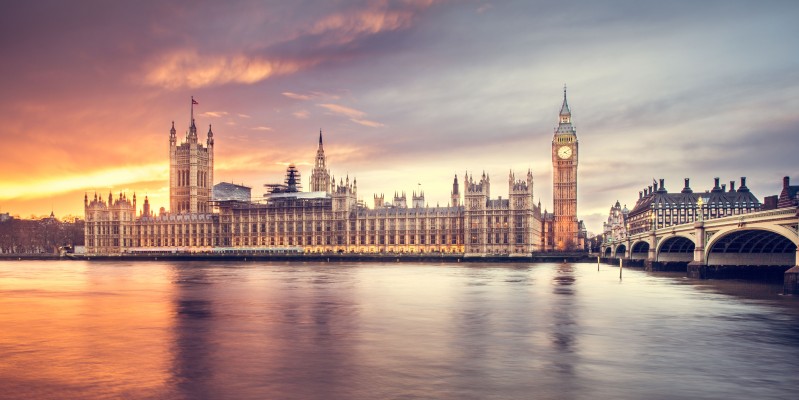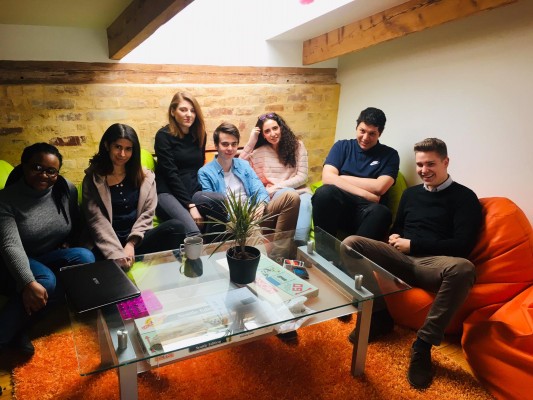It is said that the first impression is the lasting impression and since a picture tells a thousand words, having professional images is the most essential thing to begin the marketing process. Are your property listing images telling the story you want them to? This is a very important question for all real estate agents and property brokers as the impact of an image on viewers cannot be overstated. No matter how good the online property listing portal is, if your photography doesn’t sparkle you’re going to keep missing out on vital leads.
“In today's market, your online presence is your first showing and professional photos are the key to getting people interested in a listing. Homes with bad photos receive far less interest and sit on the market longer than homes with professional photos”. - Ed Bermudez of Rise Visual Media
To help you to understand the importance of the professional real estate pictures, how it makes an impact on the client and to help create the ultimate property image gallery, we’ve compiled a list of top tips from real estate photographers and experts on taking the kind of incredible property photos that will attract eager buyers or renters.
Things to do before a real estate photo shoot
Planning is necessary to achieve success in any area of life and as such, this is indeed the most important part of this entire photography session. It does not matter if you have the most sophisticated camera or equipment but if you don’t know how to prepare the place before taking pictures, the outcome is not going to be worth it.
Before you start taking pictures,
You have to know what features of the house you would like to highlight. This goes for all properties as clients would like to see some of the basic requirements of any home. For example, it is good practise to make a list of the basic rooms that would need to be photographed stating how many pictures of each room would be highlighted. As a guide, there should be about two pictures of the larger, more important rooms including the living room, bedroom(s), kitchen, the front and back exterior and at least one picture of the bathroom, laundry, garage and other similar features.
This is just the minimum you should have for any property listing, however, it is possible to take more pictures of any of the rooms especially if they are very beautiful or have specific features which you would like to highlight.
You also have to be prepared to take the pictures, have the right equipment, make sure that they are complete so you won’t need to come back due to a dead battery or forgotten memory card. Ensure that you have a back-up plan in case of any unexpected events.
According to David Arena of Alcove Media, “The most important thing for a buyer or agent to do before a shoot is to make sure the house is clean and ready for photos. Cut grass, clean house, make beds, move cars out of driveway, etc”.
You have to remove all the items that may clutter the table tops, floors, sofas and there should be no dirty dishes, ruffled bed sheets, dirty bathrooms and toilets, mirrors & glasses.
Marcello Scolari, real estate broker at NextHome Residential and professional photographer, echoed the need for a properly presented home when he said that, “The first thing after obtaining a listing is to set the right expectations. Sometimes we bring in a home stager for help, at other times we jump into a list that our brokerage provides (courtesy of our photographer) on how to prepare a home for the shoot. Items included are - making sure windows are clean, all burned out light bulbs are replaced with same temperature bulbs, clutter is put away or moved out of the property, lawn is mowed and landscaping looks inviting amongst many others. Some of these carry past the photo-shoot and into the “Active” status when open houses and showings occur, such as keeping bathrooms and kitchen always cleaned, all beds made, etc”.
Staging a property offers many benefits as staged homes can be sold for up to 17% more than those which have not been staged and the time it takes to close the sale is typically 2.5 times quicker when the home is well staged. This means that the associated costs of decorating and presenting a property should yield great returns for the agent and the initial homeowner.
Further, a representative of Click Inside photography also added that “You must make sure every thing is working properly (lamps, bulbs, etc..)”.
There is need for furniture and some decoration as an empty house may not look too inviting and furniture allows the client to picture the space, as it gives it some life. With furnishings, you can be creative and highlight the size and potential that the house has but you have to be careful not to overdo it.
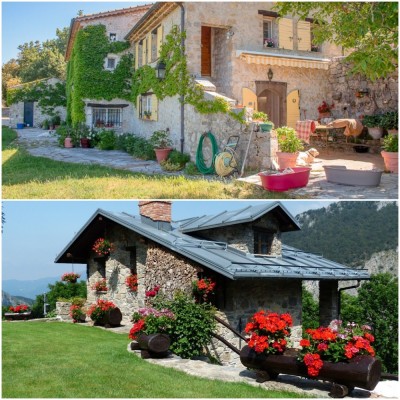
Walk around the house to see the rooms and understand the space before you start taking pictures, this gives you perspective on the best angles to capture and where to start from. It is always helpful to have a seamless flow between rooms so you can easily take pictures in a shorter time.
After making sure the property is clean and tidy, with everything in its rightful place, experiment with a range of camera angles. Low angle exterior shots can help make a building look more impressive in stature, while you should also make the most of any views from patios and balconies and show off as many of the property’s features as possible, especially important rooms and extras such as pools and garages.
Equipment for the best real estate pictures
First things first, it’s vital to have the correct photography equipment to give yourself a chance to take some beautiful photos that show off your property in the best light. With all the established benefits gotten from using good quality pictures in real estate marketing, it goes without saying that the type of equipment used is important and would contribute towards the output of the images produced. If you are working towards achieving the best quality property pictures then you should ensure that you have the basic equipment ready for the photo-shoot. To take professional real estate photos that will totally impress the clients, the right equipment is needed. For this, it is advisable to use a digital single-lens reflex (DSLR) camera, however, in situations where a property agent or homeowner is unable to access such high level photography equipment, a smartphone, especially one which is a relatively new model, may be used.
Using a phone for real estate photography
The pictures taken on any smartphone by itself would generally be substandard in real estate photography which is why Arena said that “you cannot take good real estate photos on a phone”.
Therefore, agents and homeowners would need to get a few additional equipment to help improve the standard of the photos gotten from a phone. The most essential add-on is a mobile wide range lens which helps to make smartphone pictures more beautiful, sharper, clearer and remove fisheye distortion. The lens is usually easy to attach or detach as it works with specific custom-made phone cases which can be purchased along with the lens. Such lenses allow the property broker to capture a larger area of the property while maintaining the scale so the picture does not look too small or too large.
Even the best smartphone pictures are only acceptable for rental properties or “homes that are occupied by tenants and are overstuffed with personal items, overcrowded by people and not as clean as they should be, those are the homes that in my opinion do not need a professional shoot”, says Scolari.
Even in such cases, there are basic tips to ensure that the real estate agent obtains the best photo output. Some of these tips were offered by Scolari when he said that,
- “For those few times that a photographer isn’t needed on a listing, as mentioned before such as with overcrowded and over furnished rentals, the first thing to do is to make sure that you wipe your phone camera lens. So much oil and dirt builds up from the day to day use that it can totally affect and make a difference in taking a good photo."
- "Next, at the property, make sure that all lights in all rooms are on, blinds are opened and any personal items such as family photos, medication bottles, bills, and other similar objects are moved out of view."
- "Point the camera at an average exposed area of the room, click on that area in the screen and see if it’s well balanced. If the photo seems to be too dark, click on a darker spot, or likewise if too bright, click on a brighter spot. This will adjust the camera for proper exposure."
- "Before taking the shot, try to straighten the lines of the walls to be vertical. If you point the phone down, it’ll look like a triangle and that the walls are leaning. And never point the camera at one specific spot such as a sink only or toilet only. Get a whole room in the frame.”
These tips along with the wide range lens would give the real estate pictures taken on a smartphone some level of professionalism and help to promote the property.
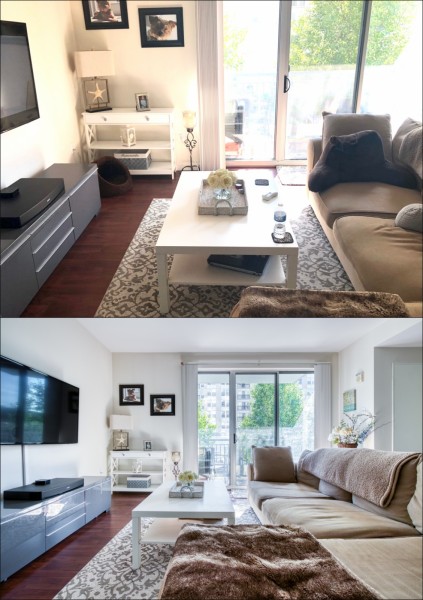
Bottom: professional picture taken with a camera on a tripod stand & processed with Photoshop
Source: Marc Scolari Photography
Camera - the basic real estate photography equipment
A DSLR camera is indeed the most basic investment one should be making in order to start taking some quality photos since there are various default settings available in the camera which makes it really easy for anyone to get some amazing pictures without going through a lot of learning and extra work. At a minimum you need a DSLR camera on which you can control the shutter and aperture settings yourself, with a wide-angle lens to maximise how much of the property you can fit in each frame.
To utilize the camera properly, a real estate broker or property owner would need:
-
A tripod stand - this is another very important equipment needed to get some steady photos as there are times when you really don’t have much space to move around to capture different angles around the corner, in that case, a tripod stand helps you mount and stabilize the camera to avoid any kind of distortion or unstable camera movement. A tripod is also essential for lowlight shooting to avoid blur when using slow shutter speeds and a polarising filter that screws onto the front of the lens will really help boost contrast in the sky for fabulous exterior shots.
-
A camera flash is essential in order to brighten an entire room in a situation where, there is not enough light to make the place look vibrant and spacious. The most important role of an external flash is to remove any sort of shadows which actually give an illusion of a smaller space whereas a well lit room looks larger and ambient.
-
A wide angle lens: this is one those equipment which is as important as your choice of camera. As with the suggested benefit of such wide range lenses when using a smartphone, it allows you to capture lot of the space especially while shooting a big room which is not possible with an average lens. So, a wide angle lens will show off all the different aspects of the room from one side of the wall to the other side with the most effective angle.
From Scolari’s experience in real estate photography, he advised that, “for those that have a DSLR camera and want to take a stab at shooting a property, use a wide angle lens (not too wide otherwise you’ll have distortion), get your hands on a tripod and make sure the vertical lines are straight. Shooting real estate photography is not as easy as it sounds by just pointing and shooting. There are a lot of knowledge behind a great photograph. You have to know composition, lighting, how to properly use a flash at lower power to fill those darker areas, how to work your camera in Manual or Aperture Priority mode, how to take different exposures”,
Simiarly, Click Inside photography stated that property brokers should “have a great equipment, gather knowledge, keep lines straight, illuminate dark areas and take detail photos”.
Additionally, Manel Moedano of virtual-view.com, suggested that for realtors who want to take virtual tours, it is essential to use the right equipment such as the “ Ricoh Theta Z1, which you can place in the middle of the room and press the shutter button (you have 10 seconds to hide)”. This makes the process fast and automated reducing the amount of skill necessary for real estate agents to create high quality virtual tours.
Lighting in property photography
Light is to photography what paint is to art. Without good lighting you cannot take good pictures, so try to take your photos in the mornings or evenings when natural light is at its softest and, even if the property is situated in a rainy climate, chose a day when the sun is out! Grey skies make everything look flat and dull. Experiment with artificial lighting too.
Night-time shots of well-lit pool areas can look great, just remember to use a tripod to account for the slow shutter speed you’ll need to expose the image correctly. Indoors, avoid using flash, which can create unsightly shadows and glaring reflections off fixtures and fittings. This is again where bright natural light and a tripod can really help enabling you to avoid using artificial lighting.
Editing property pictures
Photo editing is an essential part of real estate photography. Agents, property brokers and even the best photographers may still need to edit pictures including those taken with top quality cameras using the proper settings. This is the most creative part of property photography where you need to understand the role of effective editing in making the real estate photos more appealing and relatable to grab the attention of the viewer at first glance. It is possible that there may be some unexpected imbalance of colours, reflections or shadows, or even distracting items in the background. In such cases, it is important to edit the images to offer high-quality photos.
The real estate broker has to ensure that they have a basic understanding of light adjustment which is the most important part of effective editing. Adding hints of colour to the pictures where the lines are not sharp enough and removing any sort of haziness or distorted lines from the pictures is another part of editing.
In light of this, Arena suggested that, “Colour correcting real estate photos is extremely important (if not done in the property already)”. This may be useful at times when natural or artificial lighting affect the sharpness of the picture. It is also necessary when there are tints in the glass or windows or when the settings of the camera equipment cause the image to lose colour balance.
It is acceptable to enhance the pictures even on the camera or other equipment used even before transferring the image to any software. A number of photography equipment allow for adjustments in the brightness, balance, sharpness or even contrast of the picture. If properly done, there may be no need for editing using programs such as Photoshop, Lightroom or other photo editing software packages.
Scolari stated there is a lot of work in the production of a good picture such as “expert Photoshop knowledge with layering, layer masking and all that goes into post processing”.
Further, in order to change the aspect ratio of a picture or redirect the focus of the image, it is common practice for pictures to be cropped. Agents need to ensure that the image does not lose its true nature and that the cropping is done properly so as to avoid removing important fittings which may be in the surrounding area or the background of the image.
Using high-dynamic-range (HDR) imaging comes in handy when taking landscape images (these are expected in real estate photography) especially those which present the views of land, mountains, skies and seas. Such views may be indeed attractive to property buyers and real estate agents like to emphasize on them when showing pictures of the properties however, the contrast between such features may cause the sky to appear too bright making the other parts of the picture relatively dark. In such instances, as well as at times when the natural sunlight casts shadows or glares which may not be flattering causing a section of the image to be to dark, Moedano indicated that, “HDR is very useful”. HDR simply works to identify the best parts of three identical images using different exposures and merges them together to form one, ideally better-looking, picture. This feature is sometimes already embedded in cameras or other photography equipment but may also be achieved using photo editing software.
While photo editing may be an area of interest to photographers and real estate agents, Bermudez emphasised the need for consistency and branding even through pictures in saying that, “When it comes to editing you need to use the style that best represents your brand. Try to create a “look” that becomes your own that is recognized by your clients”.
Editing is all about keeping the natural look, with some minor adjustments to achieve that perfect combination.
Watermarks on real estate photos
Using watermarks on pictures comes with varied opinions all of which converge on the reason for taking the pictures. Real estate agents and property owners are advised to refrain from using watermarks as they may distort the pictures. Additionally, a number of listing portals do not accept pictures with such watermarks thus limiting the reach of the agent and the access to potential clients.
Moedano simply said that watermarks should not be used “on pictures, the focus must be 100% the property.”
According to Arena, “Most Multiple Listing Services do not allow watermarks. I also do not think a photographer should put them on the photos but if listing agents want to for marketing purposes that's obviously fine”.
Bermudez was very specific in saying that, “you can’t watermark the photos you deliver to clients but would be fine to do on your own website or for social media”.
These remarks buttress the point of view that watermarks are mostly disadvantageous to agents and home owners for example, there are mobile or computer programs that enable the easy removal of watermarks except if they are large and placed across the entire picture generally rendering it useless. This limits the opportunities for the picture to be promoted while reducing the chances of organic marketing and shares especially on social media. Watermarks also do not project professionalism especially if the logo or slogan used is not properly designed. Although many agents may consider watermarks as a brand promotion avenue, it may be counter-productive if it distracts the viewers from the picture or if it is illegible.
It is acceptable to use watermarks if they are used the right way. They should be well designed and small enough to avoid distracting the viewer and they should be placed across the vertical or horizontal margin of the picture for professionalism.

Videos and virtual tours of properties
Videos and virtual tours have increasingly become more important in online and social media marketing for real estate agents with statistics showing that brokers using videos are likely to get about 73% of homeowners to list their properties with them. With such potential for videos in the property market, it is rather unfortunate that agents are still in the early stages of exploring the options of videos and virtual tours. Virtual tours are indeed attractive to clients as they present the intricate features of the property, enabling clients to imagine how the property would meet their needs and how fulfilling it would be to buy or rent such a property.
Brokers and agents can benefit from the efficacy of videos as 51% of marketing experts believe that they offer the highest returns on marketing investment with about 49% faster revenue growth compared to those who do not use videos. It is possible for real estate agents to make various videos to promote themselves and their properties, including:
Introduction videos which are an avenue for agents and brokers alike to provide insight into the value that would be obtained by the client if their services are utilized. This video is indeed vary important as it allows the agent to connect with potential clients by being friendly and informal without bragging about previous successes. Realtors can use this to highlight who they are, what they do and how the potential clients would benefit from using them.
Another video that is useful in the real estate industry is the testimonial video where former clients, can attest to their experiences with the agent and highlight the values and qualities to look out for when choosing a real estate agent. This video can help to convince leads about the benefits which the agent may have indicated in the introduction video.
Taking a video or virtual tour of the region where the realtor is active is key as this allows the client to get a feel for the area. This type of neighbourhood tour should highlight the attractive and inviting aspects of the area while giving the client a wholistic view of the region. This is a chance for the agent to feel at home and showcase the culture, landmarks and other things that make the area special.
In the real estate industry, listing videos are the most popular types of videos where the broker displays the property to draw attention to beauty, features, views and furnishings. Real estate agents tend to focus on listing videos as “videos are more engaging on most social media platforms so they are a great tool for marketing a property. They also allow buyers to see specific features of a home that photos may have been unable to capture” - David Arena.
To support Arena’s opinion, statistical analysis of social media reveals that video shares are about 1200% more than those of pictures or plain text with about 64% of customers going on to buy products after watching videos. This also translates to the generation of organic traffic from search engine results as there is a 53% chance that video content will be presented on the first page of such searches.
Moedano says that it is essential to use “self-made virtual tours, in addition to the photos, professional or not, just to simulate a real visit”. Moedano highlighted that “Virtual Tours promote transparency just like a real visit allowing you to choose what you want to see”.
Bermudez goes further to say that using a “video is very important today with everyone being able to watch them at anytime from their mobile device. A good video can tell a story that isn’t often fully told through just photos. It communicates the flow of the home and often helps bring an emotional connection to a property when paired with the right music”.
Brokers can use real estate videos to improve their property marketing strategy and make more sales.
Hire a professional real estate photographer
In order to get the best out of the sales of any property, Arena says that, “it is very important to hire a real estate photographer. Recent studies have shown that homes with professional photos sell faster and for higher prices than those without. Also, buyers say overwhelmingly that photos are the most important thing when searching for a home, even more important than the property description”.
Doing a cost-benefit analysis of hiring a professional photographer, it is usually worth the cost as the properties are presented in the best light for buyers to appreciate the value.
“As a broker manager (and a professional part time photographer), I believe that a photographer is just as important as a marketing plan to sell a home in Real Estate. But any other listings, based on the amount of commission that is being collected, must have a professional shoot. I tell my agents that (A) we stand out by offering professional photography against those agents that use their cell phones; and (B) honestly in my opinion it is a disservice to offer a listing for sale with horrible photos. You wouldn’t want to hire an amateur for your wedding pictures, would you?” - Marcello Scolari.
To make the process of real estate photography more efficient, Click inside real estate photography says that, “It's very important to have more than 1 photographer so you can cover a larger area”.
Make your lead real estate photo count
Once you’ve taken a selection of great images that reflect the splendour of your property’s interior and exterior, you should exercise just as much care in choosing the lead image that potential buyers will see when they first come across your listing. Get this wrong and they will likely bounce straight off without reading a word of your text. Ideally, choose a shot that captures the property in its setting to contextualise the whole listing, or alternatively focus on the best room or feature of the house, such as a swimming pool.
Arena advices that it is best to “hire a professional who specializes in real estate photography”.
And Scolari says,“Bottom line, I coach my agents to focus on the seller and their listing, leaving the photography to a professional, just like leaving the mortgage process to the proper professional. This ensures a great first impression of all of our listings, making for a happier client and future referrals.”


